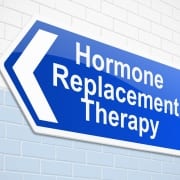Sunburned Eyes: Protecting your eyes from the sun.
Chances are you’re familiar with preventative measures to protect your skin from sunburn, but did you know your eyes are susceptible to sunburn too? That’s right. Your eyes are prone to sunburn, just like your skin. However, let’s assume you avoid actual sunburned eyes. Do you really need to worry about a little sun exposure here and there? The answer is an emphatic yes. While sunburned eyes pose immediate problems, there is concern about the cumulative effects to our eyes of unprotected sun protection. According to the American Academy of Ophthalmology, the potential danger posed to our eyes from ultraviolet light exposure can lead to blinding eye diseases and tumors. Yikes! Grab your hat and sunglasses, and let’s learn more about potential sun damage and how to protect your precious peepers.
How is the sun dangerous to my eyes?
A little sun is great for us! It is essential for vitamin D production, improves our sleep-wake cycle, helps boost mood, and even helps prevent nearsightedness in kids. However, like so many things, you can get too much of a good thing. The UV (ultraviolet) light can damage delicate eye tissues, the cornea, and the lens. In more severe cases, solar retinopathy, a burn to the retina, may result from looking at the sun during a solar eclipse. Sometimes the effects of sunburned eyes might be immediate, but often, it can take several years for more serious problems to develop. Here are the primary areas for concern from sun damage to your eyes:
- Cataracts
- Eye Cancers
- Sunburned Eyes (photokeratitis)
- Photokeratitis is a surface burn to the cornea and conjunctiva caused by looking directly at the sun but may also occur from the reflected sun off snow, water, sand, or ice. Much like sunburned skin, the symptoms usually last a few days as the eyes heal. However, this UV exposure may contribute to slow-developing problems like eye cancer and cataracts. Deeper, more dangerous burns to the retina that last longer or may cause permanent damage are possible during solar eclipses, so never look directly at a solar eclipse. Always view the sun during a solar eclipse using a device intended for that purpose.
- Snow Blindness is a form of photokeratitis caused by sun reflections off snow, water, sand, or ice.
- Eye Growths
What are the symptoms of sunburned eyes (photokeratitis)?
- Pain
- Itching
- Redness
- Blurriness
- Gritty feeling
- Excessive tearing
- Headache
- Swelling
If you experience any of these symptoms, get out of the sun immediately. Keep in mind, symptoms may not be apparent immediately but may develop several hours after sun exposure. Rest your eyes in a darkened room. Remember to remove contact lenses if wearing any. Applying cool compresses and artificial tears may also help soothe irritation. Mild cases usually resolve within a few hours or days but if you have concerns or your symptoms are more severe, contact your healthcare provider or eye doctor. They may recommend OTC pain relievers or prescription eye drops.
Are there certain times of the day when there is an increased risk for sunburned eyes?
Typically, the sun is most intense in the middle of the day, but because several factors affect the intensity of UV light rays, it’s crucial to be proactive all the time. Cloudy days are equally dangerous for UV light exposure, as are any conditions that produce reflective light, such as snow, water, sand, and ice. Remember, too, the sun’s intensity increases the higher you are in altitude.
Prevention is the best medicine for protecting your eyes from the sun.
- Sunglasses, sunglasses, sunglasses!
- A good pair of sunglasses is your best defense for protecting your eyes from the sun’s damaging UV light. Look for glasses that offer good 99-100% UV protection. Labels may indicate 100% UV, UV-A, and UV-B, or UV400. Refer to the American Academy of Ophthalmology’s recommendations for more information about what to look for in sunglasses. Large framed, particularly wrap-around style glasses, offer some additional protection from UV rays entering from the open areas around sunglasses. This is a good choice if you work outside or spend a lot of time outdoors.
- Wear a hat.
- A wide-brimmed hat is a great addition for an extra layer of protection but remember, a hat alone is not enough. Paired with sunglasses, a hat will give you broader protection from both direct and reflected UV light.
Other sources for dangerous UV Light exposure.
- Tanning Beds
- Sun Lamps
- Welding torches
Our healthcare team is always available to answer your questions and support your health and wellness. Contact us for an appointment.











